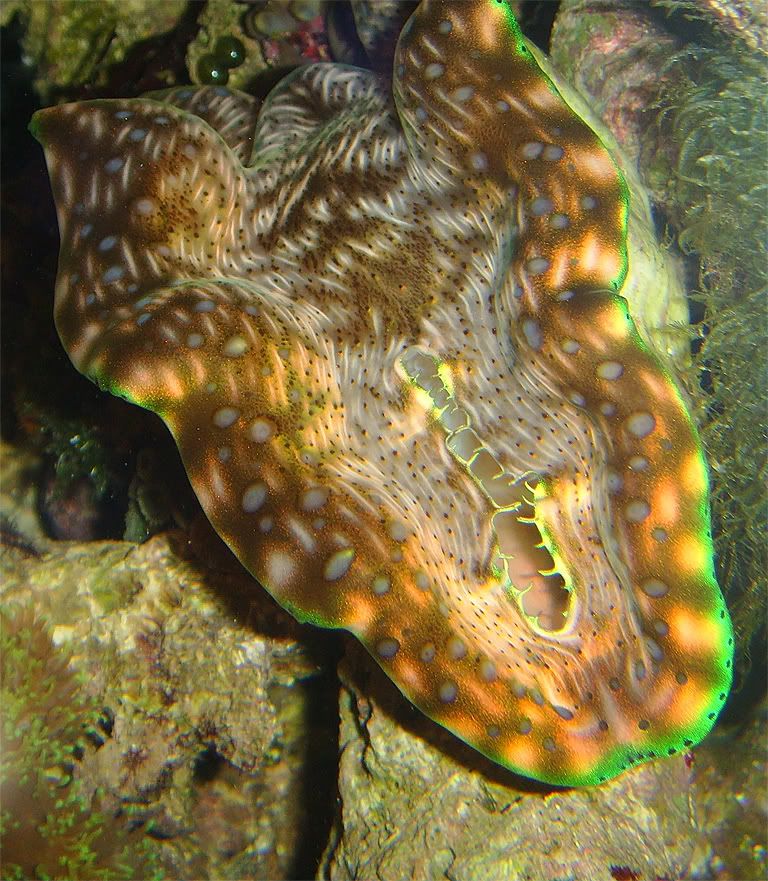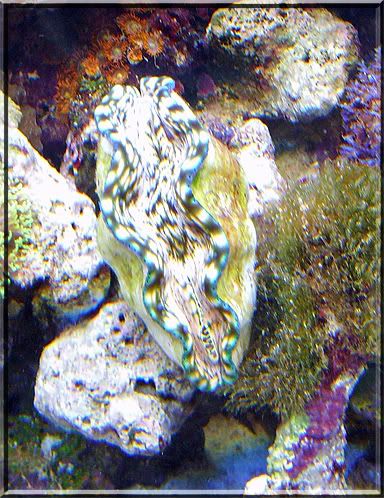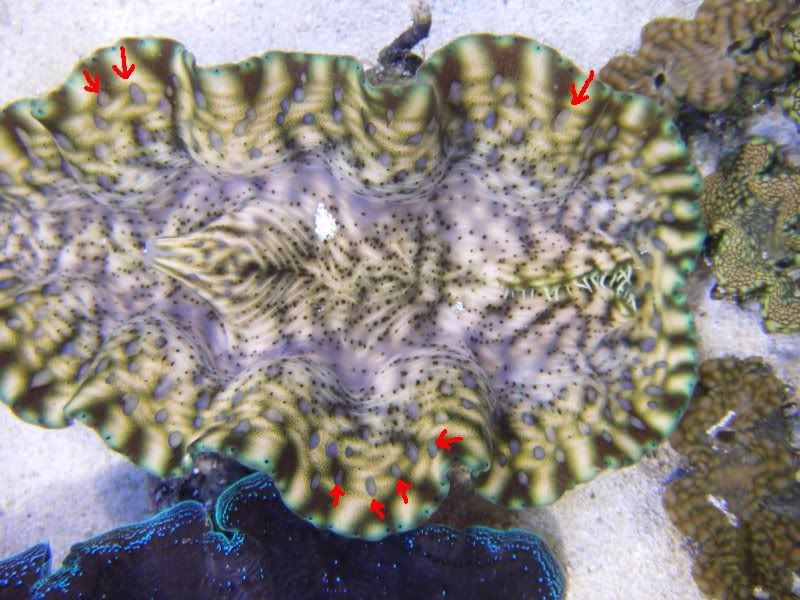keri
Active Member
Hi all
Was wondering if anyone knows what these pale spots on my clam could be? You can see them as whiter dots in the picture, they don't look as if there is any fungus or growths of anysort, just areas that lack pigmentation. They have been there since I got the clam (over a month I think - I'll have to look) and don't seem to be affecting growth at all as there is a new ridge of growth about 1/6" wide. I'm getting over a recent bout of dinoflagellates so the tank ias a little stressed but really tho dots have been there since day 1. (or maybe even at the store, I'm not sure) Could it still be stress? He's on the rocks because that's where I *thought* he should be placed and by the time I realized otherwise he was allready firmly attached.
Thanks!
edit: he looks a little shrivelly because lights were out for about 10 mins when I took the pic - my camera is acting up and doesn't like the T5's.

Was wondering if anyone knows what these pale spots on my clam could be? You can see them as whiter dots in the picture, they don't look as if there is any fungus or growths of anysort, just areas that lack pigmentation. They have been there since I got the clam (over a month I think - I'll have to look) and don't seem to be affecting growth at all as there is a new ridge of growth about 1/6" wide. I'm getting over a recent bout of dinoflagellates so the tank ias a little stressed but really tho dots have been there since day 1. (or maybe even at the store, I'm not sure) Could it still be stress? He's on the rocks because that's where I *thought* he should be placed and by the time I realized otherwise he was allready firmly attached.
Thanks!
edit: he looks a little shrivelly because lights were out for about 10 mins when I took the pic - my camera is acting up and doesn't like the T5's.




